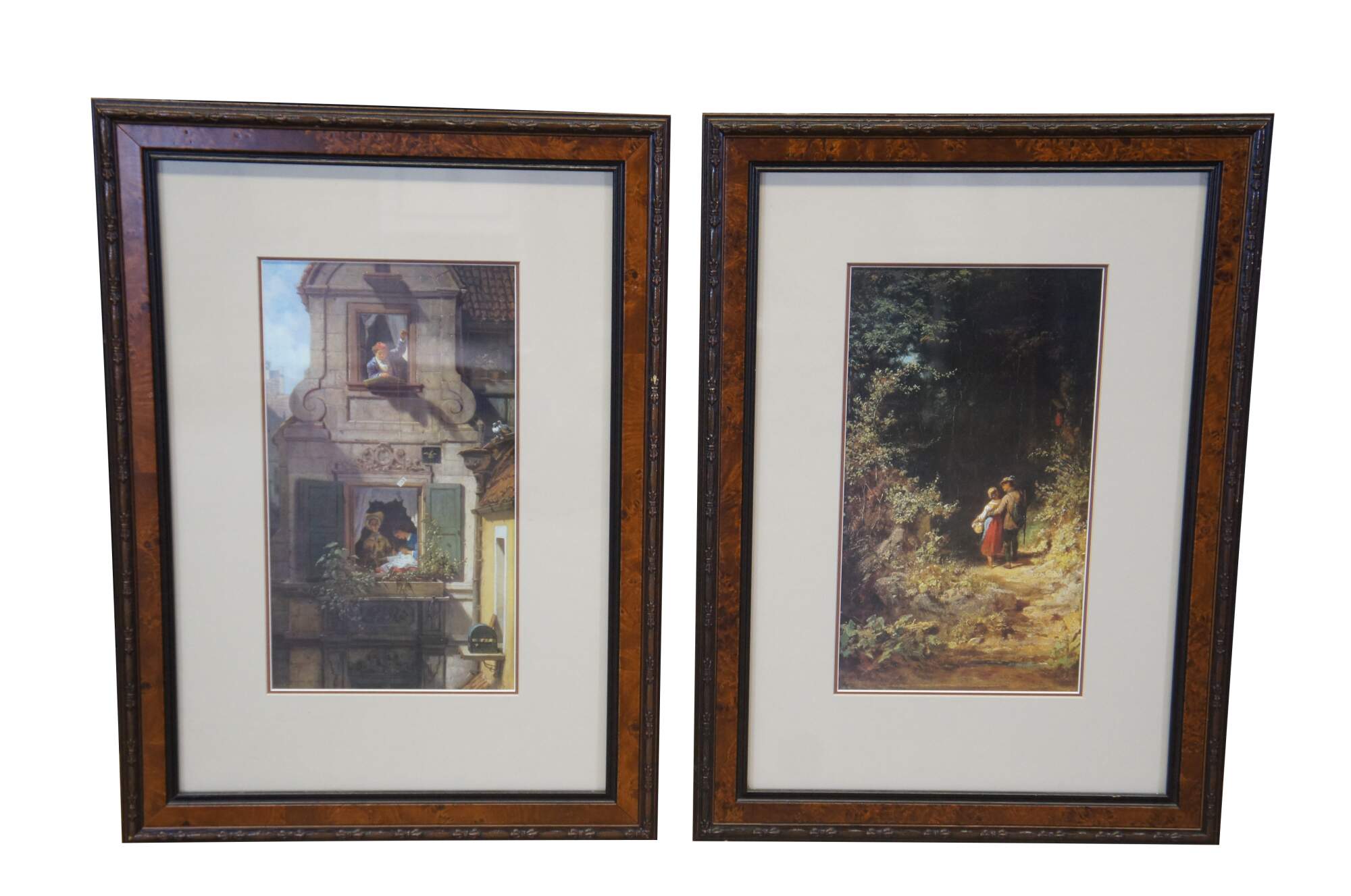
Shipping:
Free Shipping Included
Delivery:
Estimated 2-15 Business Days
Payments:
Credit Card, Check, Cash, PayPal, Apple Pay, Venmo
Returns:
30 Days 100% Money Back Guarantee, Buyer Pays Return Shipping
Description
Two vintage Carl Spitzweg prints in burl frames.
The Intercepted Love letter (c.1860)
Lovers in the Forest. (c.1860)
About Carl Spitzweg
1808-1885 - German painter and draughtsman
Carl Spitzweg was one of the most important artists of the Biedermeier period. He created numerous paintings, oil studies, drawings and watercolours whose peculiar, a whimsical charm made him the most popular representative of the bourgeois genre and landscape painting in southern Germany.
Spitzweg came from a wealthy Munich merchant family and initially completed a degree in natural sciences. An illness led him to the decision to become a painter. He continued to train himself and soon found connections with other colleagues of the Munich school of painting, such as Moritz von Schwind.
Spitzweg is one of the great German painters and draughtsmen of the 19th century. His best-known pictures, such as "The Poor Poet", the "Bookworm" or the "Eternal Wedding Man", show eccentrics of bourgeois society indulging in their respective hobbies.
Carl Spitzweg's imagination and outstanding painting technique were combined with perhaps the most important ingredient: his sense of humour. With wit and affectionate exaggeration, the inveterate bachelor created character studies of quirky eccentrics and romantic encounters - always told lovingly and with a twinkle in his eye. This is how he became one of the most popular German artists. He chose very small formats and portrayed the figures precisely and in detail in their respective milieu. In this way, he achieved a satirical overdrawing of the types that reached into the grotesque. In his later works, he placed more emphasis on the spontaneous, sketchy and moving, which is particularly evident in his landscape depictions.
He was not discovered by art history until around 1900, and throughout his life, he was never as famous as other contemporary painters.
Condition
Very good, light frame wear.
Dimensions
17" x 24", sans 8" x 14"
You May Also Like